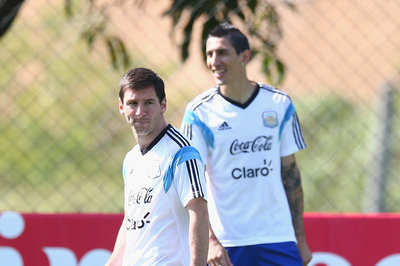Jeremy Guthrie was one of the only productive Orioles at the end of last decade, and now he can bury them in Game 3 of the ALCS.
Jeremy Guthrie was quietly one of the AL East's better pitchers back when he was with the Orioles. No one noticed, though, because of how he succeeded and because the O's were at their most miserable. In 2007, the Orioles finished in fourth place, the loftiest standing they would achieve with Guthrie in town: From 2008 through 2011, Baltimore finished dead last in the AL East four times. Guthrie was traded prior to the 2012 season, which just so happened to be the year the Orioles snapped their postseason-less streak at 14 years.
Because of that deal, 2014 marks the first time Guthrie has been in the playoffs in an 11-year career, while 2014 is the first time the Orioles have made it as far as the ALCS since 1997. And now, Guthrie is set to be the Royals' Game 3 starter -- in his first-ever playoff start and appearance -- against those very same O's for whom he once labored, with a chance to bury them in a 3-0 hole LCS that only one team in history has ever dug themselves out of.
It wasn't Guthrie's fault the Orioles were a mess during his five seasons in Baltimore. Guthrie had just one poor year for the Orioles, in 2009, when he threw 200 innings but with an elevated home run rate that mauled his ERA and helped him finish with a below-average 90 ERA+. He was still worth two wins above replacement, though, because his ERA, while not up to his standards, was not unsightly for a pitcher in one of the game's most hitter-friendly parks contained within its most difficult division. Combine that context with 200 innings and 33 starts, and Guthrie was basically average in spite of the dingers -- average was the worst he would be while wearing an O's uniform.
Guthrie was worth over three wins per year for the Orioles, and ranked 11th in the American League in wins above replacement from 2007 through 2011 according to Baseball Reference. That's more wins than James Shields, more than Gavin Floyd, more than Andy Pettitte, and more than John Lackey during the same period. You never heard Guthrie's name in the same breath as those arms, but he was doing work.
Guthrie during his final start with the O's. (Photo credit: Dave Reginek)
That silence was in part because his teammates were terrible: the next-best Oriole was reliever Jim Johnson with 6.4 wins from 2007 through 2011, and Erik Bedard came in at third even though he only pitched one season for the O's: These three are the only Orioles pitchers to amass at least five wins above replacement over a five-year period. It was also because Guthrie wasn't the sexiest arm around. He could hit 94 on the radar gun and generally sat around 92-93, but no one notices this when hitters make contact constantly. Contact -- along with superb control -- was the key to Guthrie's success, however. He didn't induce the most grounders of anyone, but he consistently induced weak contact on them: Guthrie's secret was creating easily fieldable balls in play for his defense. By the time Guthrie was dealt from the O's, he allowed opponents just a .214 batting average on balls in play on grounders -- in a sample consisting of nearly 1,000 innings -- while the league was at least 20 to 30 points higher during every one of those seasons.
Since that kind of success doesn't show up in a lot of advanced pitching metrics such as Fielding Independent Pitching, or FIP as you're more likely to see it written, not even the stats crowd was in love with Guthrie. Front offices didn't feel much differently, as the Orioles were not offered a single prospect in exchange for Guthrie when then-new general manager Dan Duquette put him on the market. Baltimore settled for an oft-injured project in Jason Hammel and a reliever in Matt Lindstrom in return for the only pitcher worth anything during the previous regime. That worked out well for the O's, as Hammel broke out and Baltimore made the postseason, but it's also worked out for the Royals.
Guthrie didn't go directly to Kansas City. The original trade was with the Rockies, and the thin air doomed him to a 6.35 ERA and a serious drop in trade value: the Rockies would swap Guthrie to the Royals for Jonathan Sanchez, who had somehow managed to be exponentially worse than Guthrie while with Kansas City. Guthrie would regain his form while with the Royals, however, posting a 132 ERA+ over 14 season-saving starts, and then would sign a three-year deal following the season to give the Royals the reliable innings eater they had been unable to produce themselves.
He hasn't been the reason the Royals finally made it back to the playoffs for the first time since 1985, but Guthrie has done his part. He's thrown over 200 innings in both of his full seasons with Kansas City, and produced an ERA+ of exactly 100 in that time. His trick with fieldable grounders doesn't work like it used to -- he's 35 now with 1,600 innings behind him, you know -- but it doesn't have to, since he's in a far more forgiving home ballpark. Being on a postseason Orioles team probably seemed unthinkable to Guthrie while he was with Baltimore, and he never did get that chance before leaving. He got to the playoffs eventually just the same, though, and now in his first playoff start has the chance to help send the team that kept him out of October to the brink.
from SBNation.com - All Posts http://ift.tt/1sBrEUn








0 commentaires:
Enregistrer un commentaire